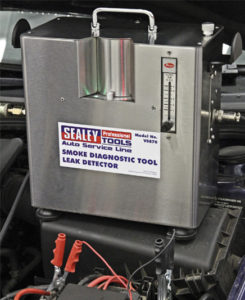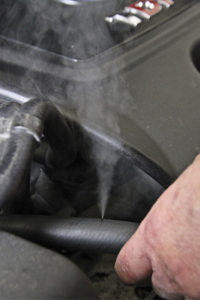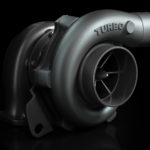As the use of turbos becomes increasingly popular, Neil Kidby, Service Tool Specialist at Sealey Tools, tells us more about the different types available and why they can go wrong.
Turbochargers have been around for many years now but the last couple of decades have seen a huge increase in their use in both petrol and diesel engine passenger cars. Maintenance of the turbocharger is not something that most motorists will give much consideration to; many may not even be aware their car is fitted with one. That said, with a peak operating speed of 250,000 rpm, maintenance is a key part of the reliability of a turbocharger.
With the wider use of these components, and the increased demands placed upon them, there are some significant differences in the way some of them operate, and what is required from them. This in turn has led to different lubrication and control system requirements; the correct type and quality of engine oil has to be adhered to, along with the manufacturer’s recommended change intervals. The three common types of turbocharger found on passenger cars are:
1. Low pressure turbochargers. These are normally used to aid engine combustion efficiency, but have little effect on performance.
2. High pressure fixed vane turbochargers. These also aid combustion efficiency but their role is also to improve engine power output.
3. Variable vane turbochargers. These are now commonly used and have adjustable vanes which move during the engine’s speed range. Different boost pressures may be required to maintain the correct combustion processes and emission regulations; this can be accurately achieved with variable vane
technology within the turbocharger.
Variable vane turbochargers make it possible to maximise and control the boost pressure over a wide engine speed range; this has significant advantages at low engine speeds when exhaust gas flow is low. By changing the pivot angle of the vanes it is possible to not only adjust the boost pressure, but also
the speed of the turbocharger. This has significant advantages over a fixed vane unit.

The latest technology even has variable vanes that don’t pivot, but slide axially instead. The advantage of this type of system is that the vanes are always at their optimum position, ensuring complete efficiency throughout the operating range. Of course this means the turbocharger and all of the vehicle’s ancillaries and sensing devices need to be in good working order. The PCM has to process data gathered from various sensors to be able to control what the turbocharger does in response to engine load, road speed and throttle position.
Regular fault – is air apparent?
A common problem found on vehicles fitted with turbochargers is air leaks from within the pipework system, either to or from the turbocharger. This can give rise to many running issues as well as poor vehicle performance. Some vehicle systems also rely on pressure readings gathered from the DPF,
which can also effect how the PCM controls the turbocharger.
Variable vane systems are particulaly vulnerable to incorrect data collection readings due to air or exhaust gas leaks. Even very small leaks that can’t be detected by sound or vision can cause the manifestation of faults. Small boost pressure leaks are particularly difficult to trace as they can only
be heard when the vehicle is under load.
The solution
Sealey’s VS870 Smoke Diagnostic Tool allows the technician to pinpoint all manner of possible system leaks, including the airintake, fuel, exhaust and vacuum systems. The unit uses mineral oil and compressed air to generate smoke at low pressure while connected to a vehicle using the various adaptors supplied. This method of checking and diagnosing the pipework is an invaluable aid and can pinpoint leaks in minutes.
Future use
From its early beginnings, the turbocharger has been quietly progressed into the very different unit that we see on today’s vehicles. With the correct maintenance these components can, and do, often cover huge mileages before needing replacement. One thing you can be sure of is that they’ll be fitted to more vehicles in the future and, as a result, are likely to be with us for many years to come.










